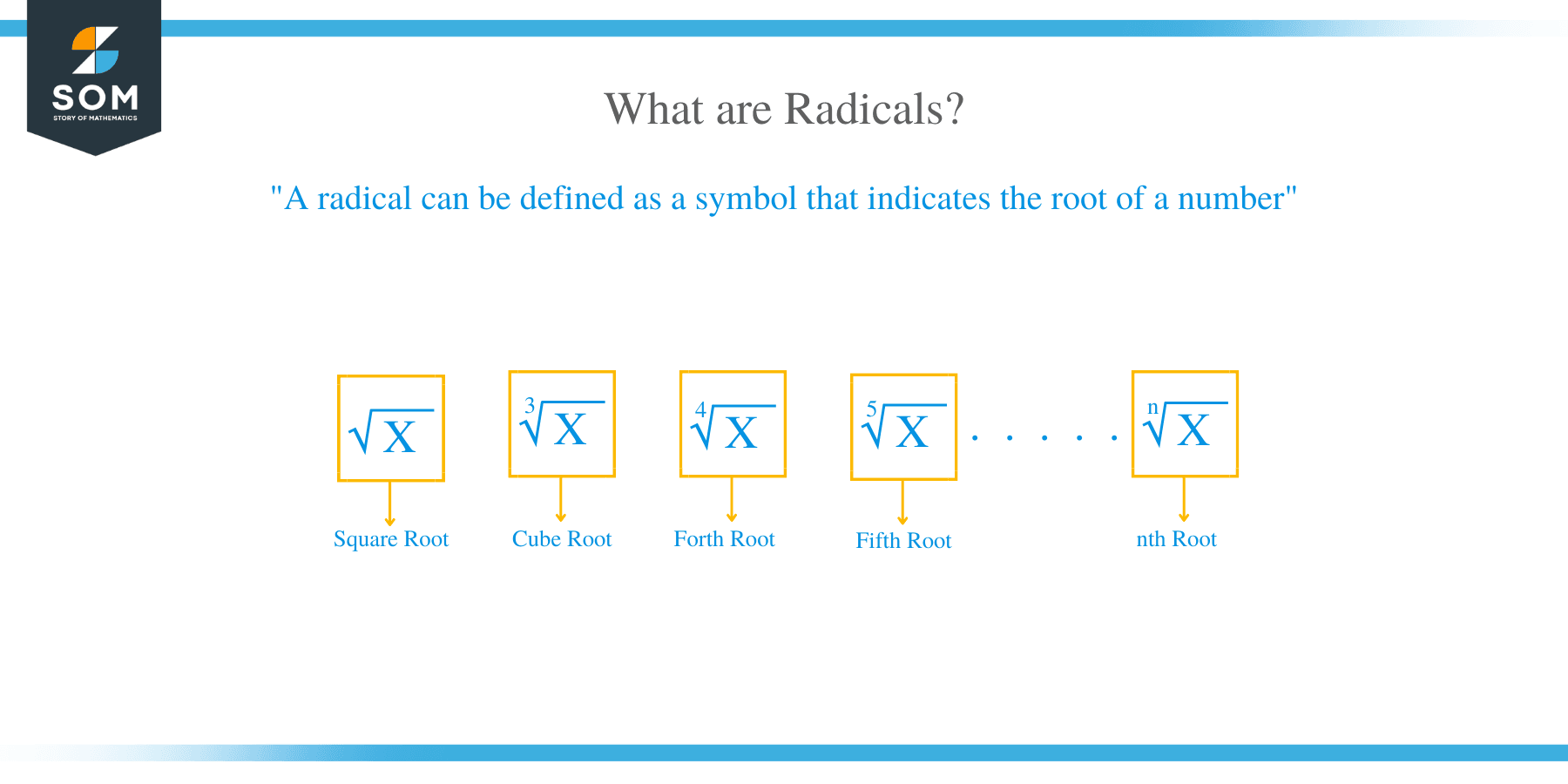- Home
- >
- Simplifying Radicals – Techniques & Examples
Simplifying Radicals – Techniques & Examples
 The word radical in Latin and Greek means “root” and “branch,” respectively. The idea of radicals can be attributed to exponentiation or raising a number to a given power.
The word radical in Latin and Greek means “root” and “branch,” respectively. The idea of radicals can be attributed to exponentiation or raising a number to a given power.
The concept of radical is mathematically represented as x n. This expression tells us that a number x is multiplied by itself n number of times. For instance,
3 2 = 3 × 3 = 9, and 2 4 = 2 × 2 × 2 × 2 = 16.
How to Simplify Radicals?
A radical can be defined as a symbol that indicate the root of a number. Square root, cube root, fourth root are all radicals.
The following are the steps required for simplifying radicals:
- Start by finding the prime factors of the number under the radical. Divide the number by prime factors such as 2, 3, 5 until only the left numbers are prime.
- Determine the index of the radical. The index of the radical tells the number of times you need to remove the number from inside to outside radical.
- Move only variables that make groups of 2 or 3 from inside to outside radicals.
- Simplify the expressions both inside and outside the radical by multiplying.
- Simplify by multiplication of all variables both inside and outside the radical.
Example 1
Simplify: √252
Solution
- Find the prime factors of the number inside the radical.
252 = 2 x 2 x 3 x 3 x 7
- Find the radical index, and for this case, our index is two because it is a square root. Therefore, we need two of a kind.
√ (2 x 2 x 3 x 3 x 7)
- Now pull each group of variables from inside to outside the radical. In this case, the pairs of 2 and 3 are moved outside.
2 x 3 √7
- By multiplication, simplify both the expression inside and outside the radical to get the final answer as:
6 √7
Example 2
Simplify:
3√(-432x 7 y 5)
Solution
- To solve such a problem, first, determine the prime factors of the number inside the radical.
432 = 2 x 2 x 2 x2 x 3 x 3 x 3
- Because, it is cube root, then our index is 3.
–3√(2 x 2 x 2 x2 x 3 x 3 x 3 x x 7 x y 5)
- Extract each group of variables from inside the radical, and these are 2, 3, x, and y.
-2 x 3 x y 3 x x√(2xy 2)
- Multiply the variables both outside and inside the radical.
-6xy 3√(2xy 2)
Example 3
Solve the following radical problem.
Find the value of a number n if the square root of the sum of the number with 12 is 5.
Solution
- Write an expression of this problem, square root of the sum of n and 12 is 5
√(n + 12) = square root of the sum.
√(n + 12)=5
- Our equation which should be solved now, is:
√(n + 12) = 5
- On each side the equation is squared:
[√(n + 12)]² = 5²
[√(n + 12)] x [√(n + 12)] = 25
√[(n + 12) x √(n + 12)] = 25
√(n + 12)² = 25
n + 12 = 25
- Subtract 12 from both sides of the expression
n + 12 – 12 = 25 – 12
n + 0 = 25 – 12
n = 13
